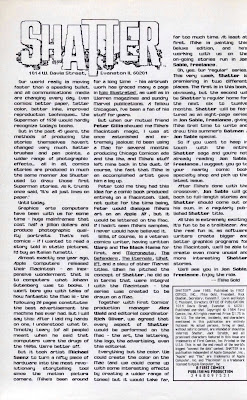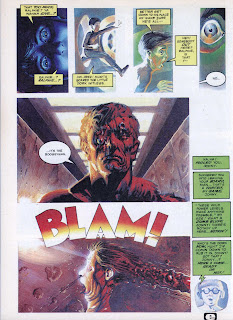Book Review: 'The Entropy Effect' by Vonda N. McIntyre
2 / 5 Stars
‘The Entropy Effect’ (1981, Pocket Books, 224 pp, cover art by Wayne Barlow) gives away most of its plot details on its back cover, so I’m not disclosing any spoilers by outlining the plot:
The Enterprise is studying a mysterious ‘singularity’, or black hole, when it receives an message to depart immediately for the planet Aleph Prime.
On arrival, the crew are told their mission of utmost urgency is to escort a deranged scientist named George Mordreaux to a colony called ‘Rehab Seven’, where criminals are subjected to a type of mind-wiping called ‘rehabilitation’.
Spock is familiar with Mordreaux, having studied with the brilliant physicist in the past, and is puzzled by his former professor’s manic behavior. Even more puzzling is the secrecy underlying the reason for Mordreaux’s arrest, conviction, and delivery to the Enterprise for transport to Rehab Seven.
With Mordreaux aboard, the ship departs for its destination, with the prisoner secured within the brig. However, barely is the Enterprise underway when Mordreaux gains access to the bridge, kills Captain Kirk, and vanishes. Of has he ? For Mordreaux is still within his cell, under close guard, and he claims no involvement with the murder of Captain Kirk.
As the entire ship grieves for the loss of Kirk, Spock begins to delve deeper into the circumstances surrounding the Captain’s murder and the strange disappearance of George Mordreaux. What he finds out is disturbing: Mordreaux was arrested for experimenting with time travel technology, and Starfleet wants all information about the technology purged from public knowledge. But if Spock is to undo the death of his friend, he will have to use the outlawed science of Dr Mordreaux.
Spock soon realizes that the choices before him are truly dangerous, for Mordreaux’s unsanctioned experiments have resulted in a warp in the space-time continuum…and it’s no longer a desperate measure to prevent the death of Captain Kirk, but the dissolution of the universe itself…
At the time ‘The Entropy Effect’ was written, McIntyre was a well-established SF author, and this particular Star Trek novel is not as bad as many of the others of the franchise published in the 1980s. However, I suspect even hard-core Trekkies will be disappointed by ‘Entropy’.
The initial third of the novel takes a while to arrive at the main plot, spending time instead on the ‘Let’s Get to Know a Supporting Character’ theme. In this particular Star Trek novel it’s Sulu’s turn. We learn his first name is Hikaru; he wants to advance his career, perhaps by leaving the Enterprise for an new assignment; and he is romancing a red-haired security officer named Mandala Flynn (!).
Needless to say, anyone who has listened to recent appearances of George Takei on the ‘Howard Stern Show’ will find this sub-plot disconcerting, but in 1981 things were more.…naive (wink-wink).
Much of the remainder of the narrative is overly preoccupied with various internal psychodramas taking place among the crew. Too often, lengthy interludes dealing with angst and regret in one form or another sap momentum from the major plot. When the narrative finally does center on Spock’s efforts to deter ‘The Entropy Effect’, our hero’s actions seem passive and ineffectual, and the book’s denouement is more than a little contrived.
‘The Entropy Effect’ belongs in the lower-range score category for Star Trek novels.






















































.jpg)



















